The Great Lakes are the largest group of freshwater lakes in the world by total area, spanning the northeastern region of North America. This natural phenomenon is made up of five lakes: Superior, Michigan, Huron, Erie and Ontario.
Visitors to the Great Lakes region will find that each lake has its own unique charm and offerings.
Lake Superior is known for its rugged landscapes and outdoor adventures, while Lake Michigan is celebrated for its beautiful beaches and the bustling city of Chicago.

Georgian Bay and the Bruce Peninsula
Lake Huron boasts idyllic lighthouses and hidden coves, Erie offers wine-producing landscapes and a warmer climate, and Ontario includes the grandeur of Niagara Falls.
Your trip could include island hopping, exploring maritime museums, or simply indulging in the local cuisine, with fresh fish and regional specialties at every turn.
The Great Lakes region is full of places to explore, whether you are an avid hiker looking to explore the vast wilderness of the surrounding national parks, a history buff curious about the region's maritime past, or a leisure traveler looking for the perfect beach spot.
Lake Superior is the largest of the Great Lakes by surface area at 31,700 square miles (82,100 square kilometers). It is also the deepest Great Lake with an average depth of 483 feet (147 meters) and a maximum depth of 1,332 feet (406 meters).
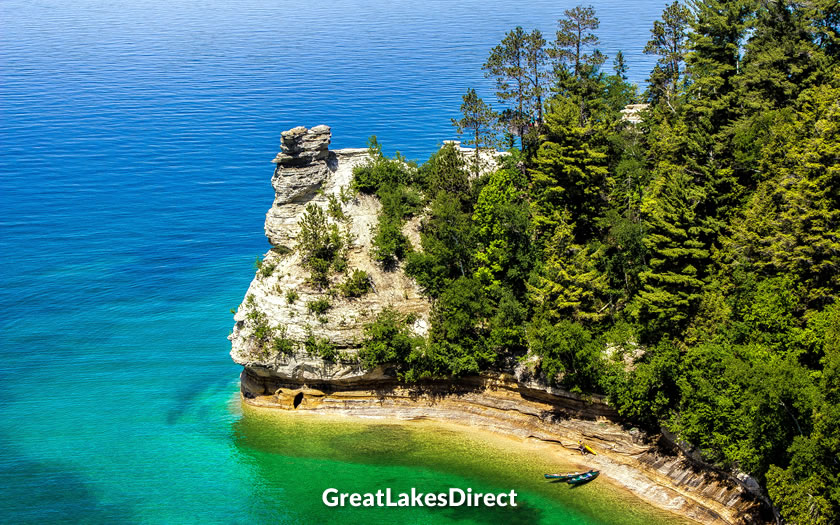
Miners Castle rock formation on Lake Superior
Lake Superior has the coldest and clearest water among the Great Lakes. It is surrounded by rugged shorelines of boreal forest and the Laurentian Mountains in Canada. The lake contains Isle Royale National Park, a remote wilderness archipelago.
![]() Discover more about Lake Superior
Discover more about Lake Superior
Lake Michigan is the only Great Lake located entirely within the United States. It is the third largest Great Lake by surface area, covering 22,404 square miles (58,030 square kilometers).
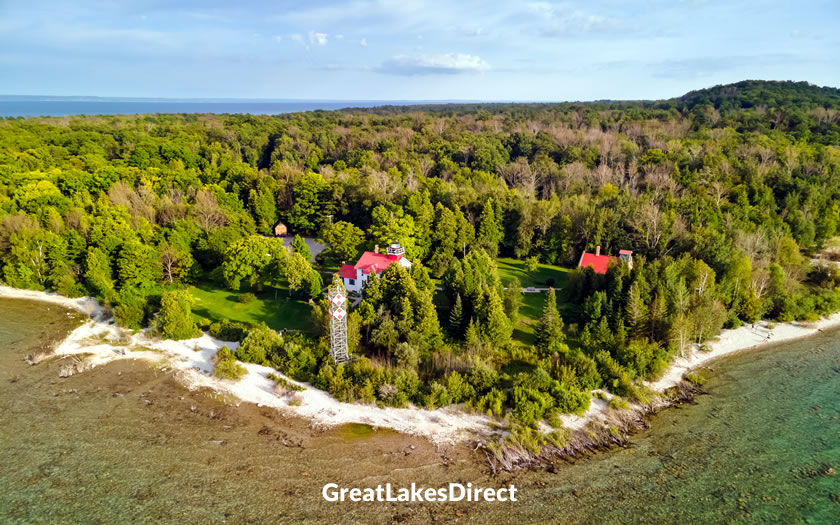
Grand Traverse Lighthouse in Leelanau County
Lake Michigan is known for its sandy beaches, tall dunes, and picturesque lakeside towns. The lake's moderate water temperatures make it popular for recreation. The major cities of Chicago and Milwaukee are situated on its shores.
![]() Discover more about Lake Michigan
Discover more about Lake Michigan
Lake Huron is the second largest Great Lake by surface area, spanning 23,007 square miles (59,590 square kilometers). It contains 30,000 islands, including Manitoulin Island, the largest lake island in the world. Georgian Bay, a large bay within Lake Huron, is known for its rugged beauty and numerous islands.
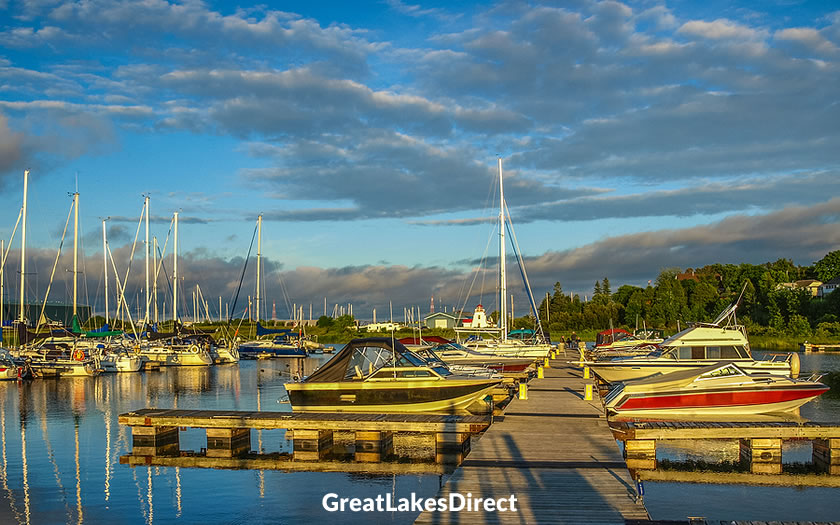
Sunset at Little Current marina on Manitoulin Island
The waters of Lake Huron are generally colder and deeper than those of the southern Great Lakes. The lake includes Thunder Bay National Marine Sanctuary, which protects almost 100 historic shipwrecks.
![]() Discover more about Lake Huron
Discover more about Lake Huron
Lake Erie is the shallowest Great Lake with an average depth of 62 feet (19 meters). Although it is the smallest by volume, it has high biological productivity. Lake Erie is considered the walleye capital of the world, offering excellent fishing opportunities.

Ashtabula lighthouse on Lake Erie
The lake's moderating effect on the local climate enables fruit-growing and vineyards in the surrounding region. Several major battles during the War of 1812 took place around Lake Erie.
![]() Discover more about Lake Erie
Discover more about Lake Erie
Lake Ontario is the smallest Great Lake by surface area, covering 7,340 square miles (18,960 square kilometers), but it is the second deepest. It is the easternmost of the Great Lakes and has the lowest elevation. Lake Ontario drains into the St. Lawrence River, which connects to the Atlantic Ocean.
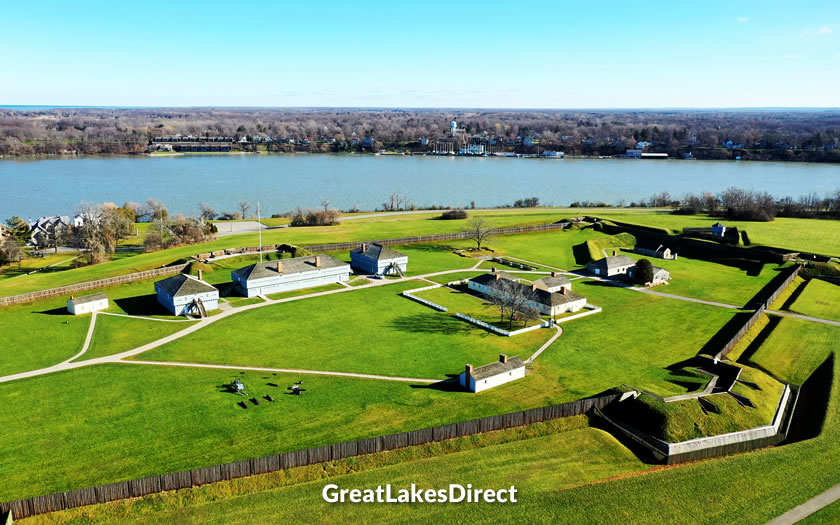
Fort George near Niagara-on-the-Lake
The lake includes the Thousand Islands archipelago and the cities of Toronto and Rochester along its shores. The presence of heavy industry and urban centers along the shores of Lake Ontario contrasts with the natural beauty of its provincial parks.
![]() Discover more about Lake Ontario
Discover more about Lake Ontario
Discover towering sand dunes with breathtaking views of Lake Michigan and miles of sandy beaches.
Mackinac Island, Michigan: This automobile-free island offers a step back in time with horse-drawn carriages, a historic fort, and fudge shops.
Pictured Rocks National Lakeshore, Michigan's Upper Peninsula: Colossal multicolored cliffs, waterfalls, and clear blue waters define this extraordinary stretch of coastline.
Indiana Dunes National Park, Indiana: A short drive from Chicago, this park presents over 15,000 acres of dunes, wetlands, prairies, and forests.
Apostle Islands National Lakeshore, Wisconsin: Explore sea caves, historic lighthouses, and a cluster of islands on Lake Superior, ideal for boating and kayaking.
The Great Lakes have been home to Native American tribes long before European settlement. The Anishinaabeg, a group that includes the Ojibwe, Odawa, and Potawatomi, are among the region's earliest known inhabitants. They lived around the lakes, relying on the abundant natural resources for sustenance and transportation.
Today, you can visit sites where the tribes' influence is preserved, including:
Their cultural legacies, visible in craft, storytelling, and place names, continue to enrich the region.
The Great Lakes catalyzed America's industrial boom, with cities like Detroit and Milwaukee becoming centers of manufacturing might.
The Harley-Davidson Museum in Milwaukee showcases America's iconic contribution to motorcycling, with a collection that narrates the company’s storied past.
Shipwrecks also tell tales of the Great Lakes' maritime heritage. Lake Superior, for instance, is the final resting place for the SS Edmund Fitzgerald.
Scattered across the Great Lakes are the remains of such vessels, essential for understanding the dangerous yet vital role these waters played in industry and transportation.
You can explore this history more deeply by visiting:
Both sites offer insights into the perils faced by historical mariners on these inland seas.
The Great Lakes Circle Tours offer unique experiences around each of the Great Lakes, highlighting their distinctive features and attractions.
Lake Superior Circle Tour covers 1,300 miles (2,092 km) around the rugged and pristine shorelines of Lake Superior. The tour takes visitors through dense boreal forests, past towering cliffs, and along scenic byways in Michigan, Wisconsin, Minnesota, and Ontario.
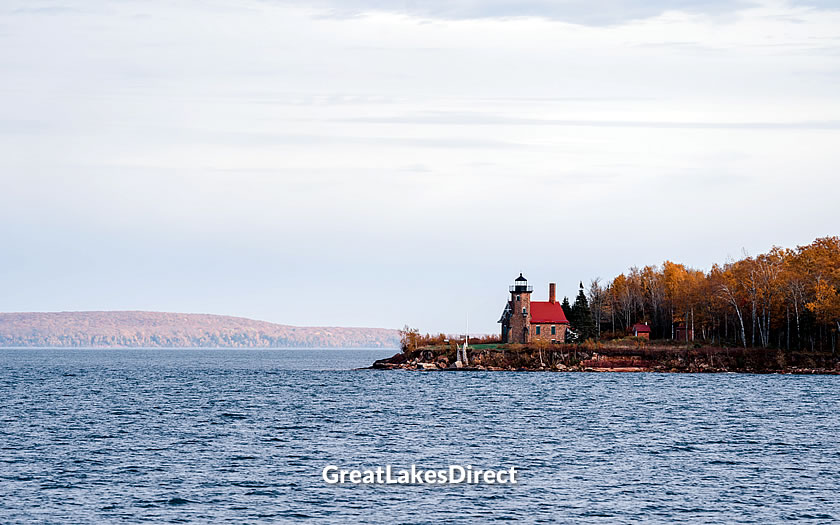
Sand Island Lighthouse in the Apostle Islands National Lakeshore
Key attractions include Pictured Rocks National Lakeshore, Apostle Islands National Lakeshore, and Isle Royale National Park.
Lake Michigan Circle Tour spans 1,100 miles (1,770 km) around Lake Michigan, showcasing its sandy beaches, towering dunes, and charming coastal towns.
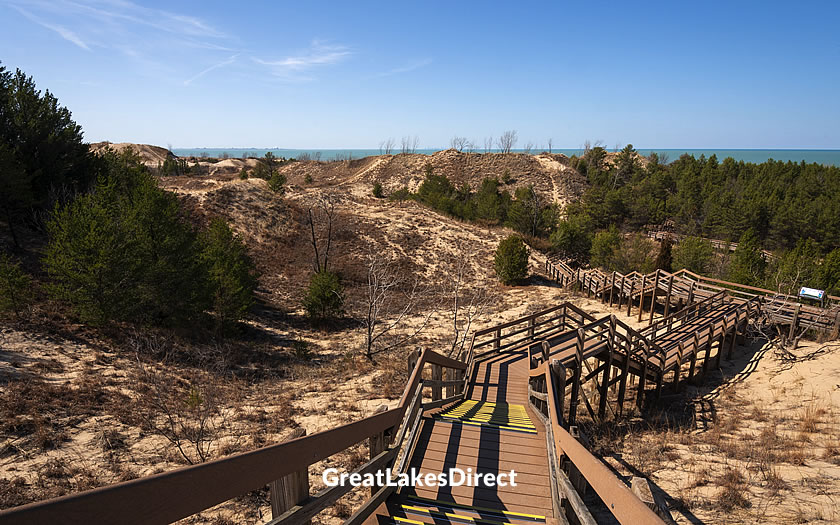
Indiana Dunes National Park
The tour route passes through Michigan, Indiana, Illinois, and Wisconsin, offering opportunities to explore Sleeping Bear Dunes National Lakeshore, Indiana Dunes National Park, and the iconic city skyline of Chicago.
Lake Huron Circle Tour extends 1,000 miles (1,610 km) around Lake Huron, highlighting its diverse landscapes and the stunning beauty of Georgian Bay.

Sunset at Little Current marina on Manitoulin Island
The tour takes visitors through Michigan and Ontario, with notable attractions such as the Mackinac Bridge, Manitoulin Island, and the 30,000 Islands of Georgian Bay.
Lake Erie Circle Tour covers approximately 680 miles (1,094 km) around Lake Erie, showcasing its rich history, vibrant cities, and world-class fishing.
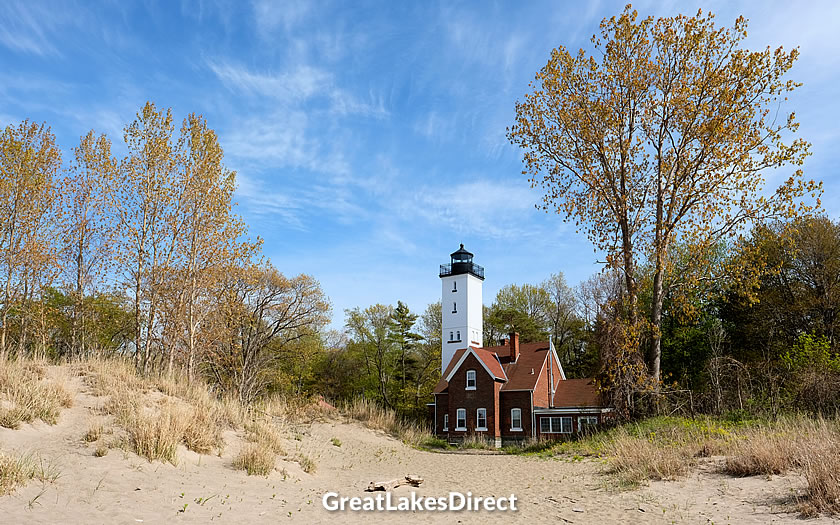
Presque Isle State Park in Pennsylvania
The tour route passes through Michigan, Ohio, Pennsylvania, New York, and Ontario, with key points of interest including Cedar Point amusement park, Presque Isle State Park, and Niagara Falls.
Lake Ontario Circle Tour spans 500 miles (805 km) around Lake Ontario, offering a blend of natural beauty, cultural attractions, and urban experiences.
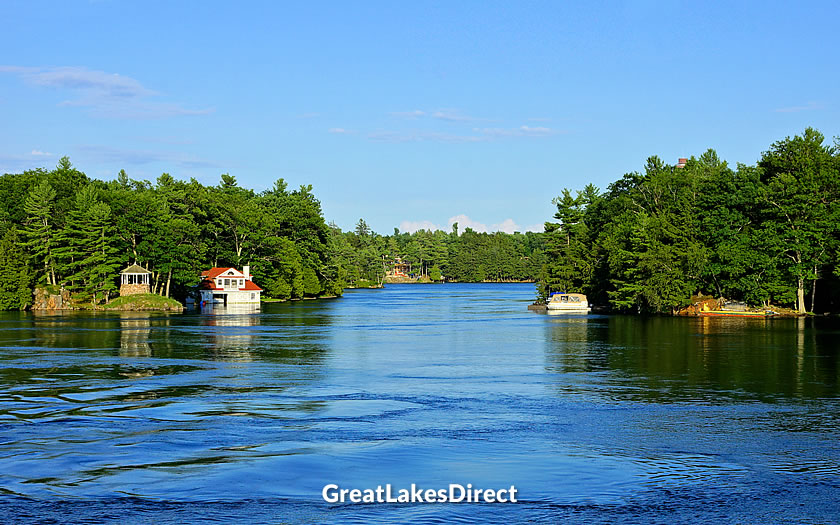
The Thousand Islands National Park
The tour takes visitors through New York and Ontario, highlighting destinations such as the Thousand Islands region, Prince Edward County, and the iconic CN Tower in Toronto.